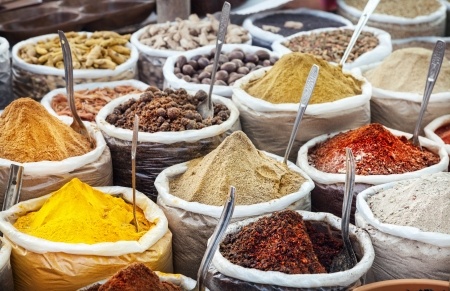Currency in India can be traced all the way back to the 6th century BC, when Ancient India was home to some of the oldest coins in the world. The Hindi word rupaya comes from the Sanskrit word rūpya meaning ‘a coin of silver’, eventually leading to the Indian rupee currency.
The British settlements across India meant that there were often different rupee coins used in different regions of the country; the Coinage Act of 1835 put a stop to all that, making sure that there was just one uniform currency in use across the country.
In 1911, a coin was made in honour of the new King-Emperor George V that accidentally became known as the ‘pig rupee’. On the coin the King appeared wearing the chain of the Order of the Indian Elephant, but bad engraving actually made the elephant look like a pig instead, enraging the Muslim population and leading to its redesign.
The modern design of the rupee sign (₹) that was officially adopted in 2010 had a lot of thought going into it. Based on a combination of both the Devanagari letter ‘₹’ and the Latin capital letter ‘R’, the parallel lines at the top show the tricolour design of the Indian flag, as well as representing an equals sign that symbolizes India’s desire to reduce economic inequality.
The first series of coins with the rupee symbol was launched on 8 July 2011. The word ‘rupee’ and the amount is written on the front of Indian banknotes in both Hindi and English, whilst the name is listed on the back in 15 other Indian languages.
A look back at British pound to Indian Rupee rates
From the Great Recoinage of 1816 all the way up until the First World War in 1914, the Indian rupee was at par with the US dollar and pegged to the British pound at a rate of ₹4.80 to £1, or £0.50 to ₹1.
After the war, the rupee and the pound both declined against the US dollar, thanks to deficits in everything from trade to capital and budget.
After India’s independence from Britain in 1947, India chose to adopt a fixed rate currency scheme and the rupee was pegged at 4.79 to 1 dollar between 1948 and 1966. At this time, the dollar was worth £2.80.
By 1966, two wars (one with China in 1962 and one with Pakistan in 1965) led to a huge deficit on India's budget and forced the government to devalue the rupee to ₹7.57 against the dollar, with the dollar still worth £2.80.
The modern rupee
By 1996 this had risen substantially all the way to ₹35.44 to $1, with $1 now worth £1.50, putting the rupee at about ₹65 to one pound. Over the last five years, the rupee has devalued from 65.17 to £1 in May 2010, reaching over ₹100 by 2013.
These days, the Indian rupee exchanges with the US dollar under a de facto controlled exchange rate, known as a ‘managed float’. This means that the Reserve Bank of India will routinely trade in the forex market using USD/INR to make sure that the exchange rate remains stable and at a low volatility.
As of 8th November 2016, 500 and 1,000 rupee notes are no longer in circulation or legal tender.
Planning a trip to India soon? Take a look at our essential guide to the ultimate Indian trip.
